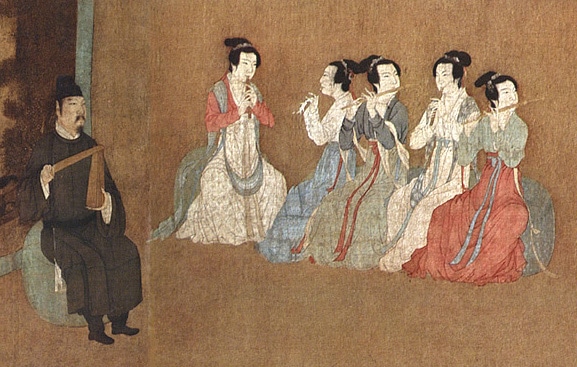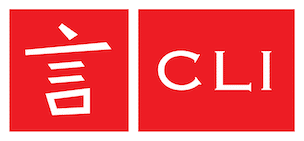Year of the Goat: Meaning, Years & Chinese Cultural Insights
Learn Chinese in China or on Zoom and gain fluency in Chinese!
Join CLI and learn Chinese with your personal team of Mandarin teachers online or in person at the CLI Center in Guilin, China.
Curious about the Year of the Goat (羊 yáng nián) in the Chinese zodiac?
The Goat—sometimes called the Sheep or Ram—is the eighth sign in the Chinese zodiac and symbolizes creativity, compassion, and tranquility.
People born in Goat years (1931, 1943, 1955, 1967, 1979, 1991, 2003, 2015, and 2027) are known for their gentle strength, artistic spirit, and desire for harmony. Read on to explore the meaning, personality traits, lucky symbols, and cultural significance of this beloved zodiac sign in Chinese tradition.

Table of Contents
What is the Chinese zodiac calendar?
The Chinese zodiac calendar is an ancient way of keeping track of time that follows the traditional Chinese lunar calendar. Each of the 12 years of this cyclic calendar is associated with one of 12 Chinese zodiac animals called 12 生肖 (shēngxiào). 2027 brings us the energy of the Fire Goat (火羊 huǒ yáng).
The animals that rotate through the 12-year cycle, in their order of appearance, are the Rat, Ox, Tiger, Rabbit, Dragon, Snake, Horse, Goat (sometimes also translated as “Ram” or “Sheep”), Monkey, Rooster, Dog, and Pig.

The Chinese zodiac calendar, based on the lunar cycle, assigns each year to one of 12 symbolic animals, shaping cultural traditions and beliefs. Pictured: CLI Immersion Program student during a visit to the Longsheng Rice Terraces.
Western zodiac vs. Eastern zodiac
While both western and eastern zodiacs are thought to have originated over 2,000 years ago, the eastern zodiac, from China, and its variations remain popular in many East Asian and Southeast Asian countries, such as Japan, South Korea, Vietnam, Cambodia, and Thailand.
By contrast, the Western zodiac started in ancient Greece and is most popular today in Europe and the Americas.
The term “zodiac” is a generic translation that superficially ties the “western” and “eastern” zodiac systems together. These systems do have some similarities in that they are both time cycles divided into twelve parts, use animals (although the western version also uses some other non-animal symbols such as Virgo or Aquarius) to represent these time periods, and are said to influence individuals' personalities and outlooks on life.
Despite these similarities, there are significant differences between the two systems. For example, the animals of the Chinese zodiac are not associated with constellations and the Chinese 12-part cycle corresponds to years, rather than months. Overall, it is somewhat misleading to compare these two systems because of the very different socio-cultural environments with which each is associated.

Western and Eastern zodiac systems share similarities, such as their 12-part cycles and use of animals, but differ significantly in origins, cultural contexts, and timeframes, with the Chinese zodiac tied to years and the Western zodiac linked to constellations and months. If interested, here's a high-resolution version of the above image.
The goat in Chinese culture
According to the Chinese zodiac, the Year of the Goat (羊年 yángnián) comes once every 12 years. Last century’s Goat Years were 1907, 1919, 1931, 1943, 1955, 1967, 1979, and 1991.
Note that the Year of the Goat is sometimes also called the Year of the Ram or the Year of the Sheep.
The most recent Year of the Goat was in 2015 and the upcoming one is 2027. People born in any of these years are said to have been born under the sign of the goat (羊 yáng).
Many famous people have been born in the Year of the Goat. These range from Apple’s Co-founder Steve Jobs (史蒂夫 · 乔布斯 Shǐdìfū · Qiáobùsī ) to Chinese model and actress Zhang Ziyi (章子怡 Zhāng Zǐyí), famous for starring in Crouching Tiger, Hidden Dragon (卧虎藏龙 Wòhǔcánglóng).

Chinese actress Zhang Ziyi, born in the Year of the Goat, is celebrated for her iconic role in Crouching Tiger, Hidden Dragon, a film that highlights themes of grace and perseverance—qualities often associated with the Goat sign.
Translating and interpreting the goat
Throughout history, the relationship between man and goat has been close, and this holds true in Chinese culture as well. The goat is seen as a delicate, docile, and easy to raise animal. It is for this reason that it was one of the first animals to be domesticated by human beings.
As a result, the characters and language used to represent “goat” have deep symbolism and meaning.

The goat, deeply rooted in Chinese culture, symbolizes docility and harmony, reflected in its early domestication and the profound meanings embedded in Chinese characters associated with it.
Auspicious significance
羊 (yáng; goat) is a component of another Chinese character, 祥 (xiáng), which means auspiciousness. In ancient Chinese, these two words were once so closely related in sound and appearance that they were interchangeable.
In addition, some believe the Chinese character 羡 (xiàn; envy) derived from an image of a person salivating over a goat. Mutton was once a high-status meat in Chinese society, as in the past, only rich people and the aristocracy could afford to eat it regularly. Thus, common people considered themselves quite fortunate when they had the opportunity to eat mutton.
Finally, the Chinese believe that the star of good fortune always smiles at the goat. This is because the zodiac sign of the sheep ranks eighth and for the Chinese, the number eight is a symbol of stability, prosperity, and luck.

The goat’s connection to auspiciousness is reflected in characters like 祥 (xiáng; auspicious) and 羡 (xiàn; envy), symbolizing prosperity, fortune, and cultural reverence.
Themes of the Year of the Goat
The Year of the Goat carries profound significance, symbolizing qualities that inspire balance, creativity, and resilience. Here are the key themes that define this year:
- Nurturing Growth and Stability: The Goat’s gentle and harmonious nature fosters an environment of stability, making it an ideal time for personal and professional development. It encourages individuals to focus on cultivating strong foundations in their relationships and endeavors.
- Creative Flourishing: Known for their artistic and empathetic traits, Goats are a symbol of creativity and imagination. This year is an invitation to explore new ideas, embrace artistic pursuits, and let innovation thrive.
- Resilience and Perseverance: Despite their gentle demeanor, Goats possess an inner strength and determination that enable them to overcome challenges. The Year of the Goat serves as a reminder to face difficulties with grace and tenacity, making way for meaningful growth.

The Year of the Goat highlights themes of growth, creativity, and resilience, encouraging personal development, artistic exploration, and graceful perseverance through challenges. Pictured: a CLI Immersion Program student learning Chinese.
Lucky symbols and elements for the Year of the Goat
To fully embrace the positive energy of the Year of the Goat, pay attention to its lucky symbols and elements:
- Lucky Numbers: according to Chinese numerology, 3 and 7 are believed to bring good fortune and success.
- Lucky Colors: Green, pink, and purple represent harmony, creativity, and prosperity.
- Lucky Flowers: Carnations and primroses are considered auspicious and symbolize beauty and resilience.
- Lucky Directions: North and northwest are favorable for opportunities and growth.
Additionally, to avoid potential challenges, steer clear of unlucky numbers (4) and colors (gold and black) that may counteract the Goat’s positive energy. These thoughtful practices can help you align with the year’s harmonious and nurturing spirit.

Embrace the Year of the Goat’s positive energy with lucky numbers (3, 7, 9), colors (green, pink, purple), and flowers (carnations, primroses), while avoiding unlucky numbers (4, 9) and colors (gold, black). Picture: the one-and-only Guilin.
Goat, sheep, or ram?
The Chinese word 羊 (yáng) refers to both goats and sheep. To differentiate between the two, it is necessary to use the terms shānyáng (山羊; "mountain goat") and miányáng (绵羊; "cotton goat"), which refer exclusively to goats and sheep, respectively. In English, the term 羊年 (yángnián) can be translated to either “Year of the Goat” or “Year of the Sheep.”
Confusingly, 羊 (yáng) also sometimes stands in for its more precise equivalent, 公羊 (gōngyáng), meaning a male sheep, buck, or ram. The ram is seen to represent physical and mental strength and is said to be strong-willed when in pursuit of its goals. Thus, “Year of the Ram” is a preferred translation for 羊年 (yángnián) among some who don’t like the meek, docile characteristics associated with the sheep.

The word 羊 (yáng) can mean goat, sheep, or ram, with specific terms like 山羊 (shānyáng) for goat and 公羊 (gōngyáng) for ram, reflecting its versatile symbolism in Chinese culture.
What is the Chinese character for Goat?
In both simplified and traditional Chinese, the character for goat is 羊 (yáng).
Significance of 羊 (yáng)
The character 羊 is simple yet elegant, representing the goat, an animal deeply rooted in Chinese culture. It is frequently seen in other characters with positive meanings:
- 美 (měi; beautiful): A combination of 羊 and 大 (dà; big), symbolizing the beauty of traditional goat headgear.
- 祥 (xiáng; auspicious): Reflecting the goat’s association with good fortune and prosperity.
These components showcase the goat’s cultural symbolism as a gentle and harmonious animal.
Stroke order and writing tips
The character 羊 consists of just 6 strokes, making it relatively simple to write. Try your hand at it by following along with the below GIF!
Practicing the correct Chinese stroke order ensures the character is balanced and visually pleasing.

The character 羊 (yáng) forms the foundation of words like 美 (měi; beautiful) and 善 (shàn; righteous), highlighting the goat’s deep cultural and symbolic significance in Chinese traditions.
Pronounce "goat" in Chinese
Goat (羊) is pronounced 🔊 yáng in Chinese, with a rising second tone. Explore CLI’s interactive pinyin chart to master this and other sounds in the Chinese language.
Learning the character 羊 is a great step toward understanding the rich symbolism of the goat in Chinese culture!
Why do you goat to be like that?
Unlike the powerful ram, the goat is often portrayed as being aloof from worldly affairs. While eating grass or walking along mountain slopes, goats generally present a picture of peacefulness. Although goats are associated with mildness and gentleness, they also exhibit the noble trait of perseverance in the face of difficulty.
Personality traits
People born in the Year of the Goat are said to be benevolent. These individuals tend to be upright and kind, and are easily influenced by the unfortunate experiences of others. Those born under this sign are often elegant artists or creative workers. When they are at a low point in their careers or relationships, they can be sad, sentimental and even pessimistic.
In addition, people born under the sign of the goat are often praised for their grace and compassion. They like children, small animals and nature. Instead of holding grudges, they can easily forgive other’s faults and try to understand other’s challenges. Sometimes, this gentleness can be misleading, however, since they are also strong and resilient.
People born in the Year of the Goat are also generous with their time and money. No matter what, they put others’ needs above their own. However, their inner stubbornness sometimes makes communication difficult.

Steve Jobs, born in the Year of the Goat (1955), exemplified the zodiac sign’s traits of creativity and resilience, leaving an enduring legacy marked by dramatic innovation.
Relationships and compatibility
In relationships, those born in the Year of the Goat need a strong and loyal romantic partner. People born under the sign of a horse, snake, dragon, monkey or chicken are suitable partners for goats because they balance the qualities of the goat with their open-mindedness and drive.
However, people born in the Year of the Rat will generally dislike goats because of their lack of self-confidence. Also, people born under the sign of the goat may have difficulty finding sympathy, understanding, and happiness from someone born under the sign of the ox or dog because neither possesses the patience and compassion needed for interacting with a goat.

Regional traditions and myths surrounding the goat
The goat in Chinese culture has a long history. Different Chinese regions celebrate its significance differently depending on their unique local traditions. In general, the goat plays a significant role in festivals and shares a unique place in the lore of many localities.
Han dynasty (206 BCE–220 CE)
During the Han dynasty in around the year 200 C.E., a tradition called “presenting the goat” emerged in the Yellow River Valley. Every year in the sixth or seventh lunar month, nephews would be presented with a goat by their maternal grandfathers and uncles. It is said that this custom is related to the story of Chen Xiang’s rescue of his mother.
Legend has it that Chen Xiang’s mother, an immortal goddess, was imprisoned under Mount Huashan by her brother because she was in love with a mortal. After Chen Xiang grew up, he split open the mountain and saved his mother. Instead of killing his own uncle, Chen Xiang ordered his uncle to present a pair of live goats to him every year. As a result, the tradition of giving a goat to a nephew began.

The Han dynasty (206 BCE–220 CE) tradition of “presenting the goat” reflects familial bonds and cultural values, rooted in the legend of Chen Xiang’s heroic rescue of his mother.
Tibet
The Tibetan people in Qinghai, China observe Goat Day, which falls on the sixth and ninth days of every lunar month. Goats are important to everyday life in Tibetan culture, providing local people with many daily essentials including cheese, yogurt and milk. Therefore, on these two days every month it is forbidden to catch a goat.

In Tibetan culture, Goat Day, observed on the sixth and ninth days of each lunar month, honors the goat’s vital role in daily life by prohibiting their capture on these days. Pictured: Potala Palace
Western China and Inner Mongolia
Among the Kazak and Mongol people that have inhabited the western reaches of China for millenia, there is a popular horseback game called “hold the goat by its teeth.”
On festive days, a goat is placed several hundred meters away from two teams of men on horseback, who race to grab it. The team that catches the goat and is able to protect it until they reach the designated area wins the game. The winning team then gets the honor of roasting the goat and sharing the spoils with the rest of the community.

In Western China and Inner Mongolia, Kazak and Mongol communities celebrate with the horseback game “hold the goat by its teeth,” combining competition, tradition, and communal feasting.
City of the Goat
Guangzhou, a cosmopolitan city in southern China that sits on the Pearl River delta, is also known as the “City of the Goat.”
The city earned its name because in ancient times Guangzhou was not very prosperous and people had hard lives. One day, legend has it that five celestial beings descended from heaven astride five goats, each animal holding six strings of millet in its mouth. They presented the millet to the people of Guangzhou in the hope that the region would not suffer from famine. Then, the celestial beings flew off, leaving behind their goats, which turned to stone.
Today, an 11-meter high stone sculpture of these five goats in Guangzhou’s Yuexiushan Park is a popular landmark that serves as a symbol of the city.
Learn more about the Year of the Goat in Guilin!
Chinese zodiac signs are just one of the many fascinating aspects of Chinese culture that continue to live on in modern China.
The best way to discover China is through the Chinese language itself. We invite you to join CLI’s expert teachers either in Guilin or online for in-depth, individualized Chinese classes during which you’ll not only learn to speak Chinese but also gain valuable insight into the endless nuances of Chinese culture.

Discover the Year of the Goat and the richness of Chinese culture by learning Chinese in China at the Chinese Language Institute (CLI).
Year of the Goat vocabulary
| Hànzì | pīnyīn | English |
|---|---|---|
| 羊年 | yáng nián | Year of the Goat |
| 羊 | yáng | Goat |
| 山羊 | shān yáng | Mountain Goat |
| 绵羊 | mián yáng | Sheep |
| 公羊 | gōng yáng | Ram |
| 十二生肖 | shí èr shēngxiào | The Twelve Chinese Zodiac Animals |
| 吉祥 | jí xiáng | Auspicious |
| 幸运 | xìng yùn | Lucky |
| 美 | měi | Beautiful |
| 祥 | xiáng | Auspiciousness |
| 善 | shàn | Kindness |
| 义 | yì | Justice |
| 羡慕 | xiàn mù | Envy |
| 农历 | nóng lì | Lunar Calendar |
| 民间传说 | mín jiān chuán shuō | Folklore or Legend |

Tania holds a BA in Arabic and Chinese from the University of Leeds, which led her to spend two years studying in Taiwan and Egypt as part of her degree. Her interests include Chinese traditional theater, international education, and programming. Tania travels to China annually and is fluent in Chinese.













